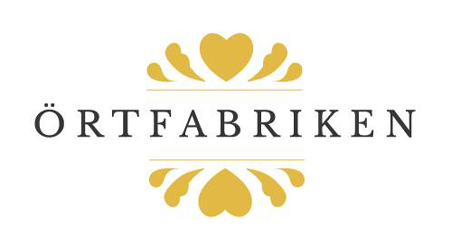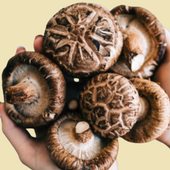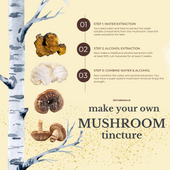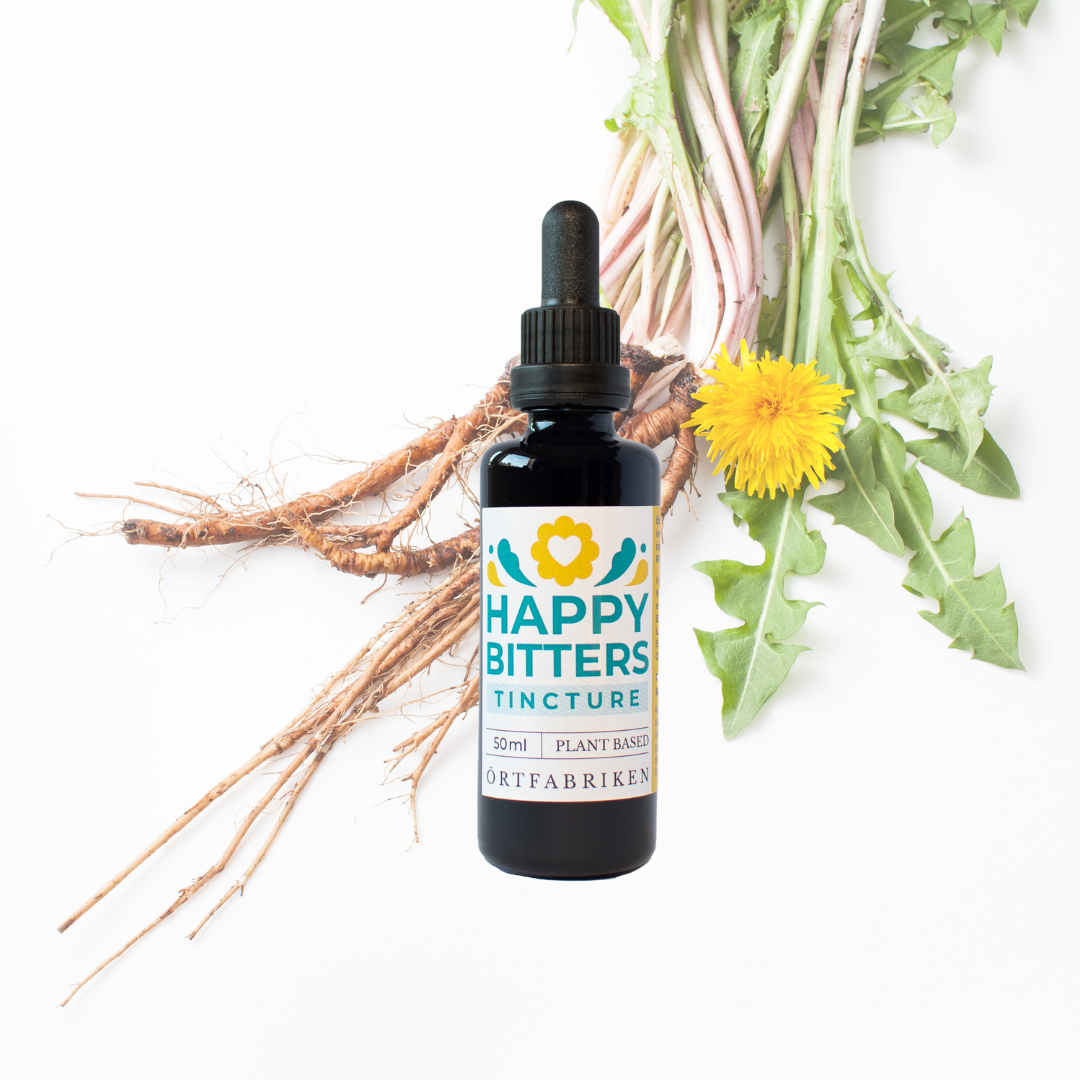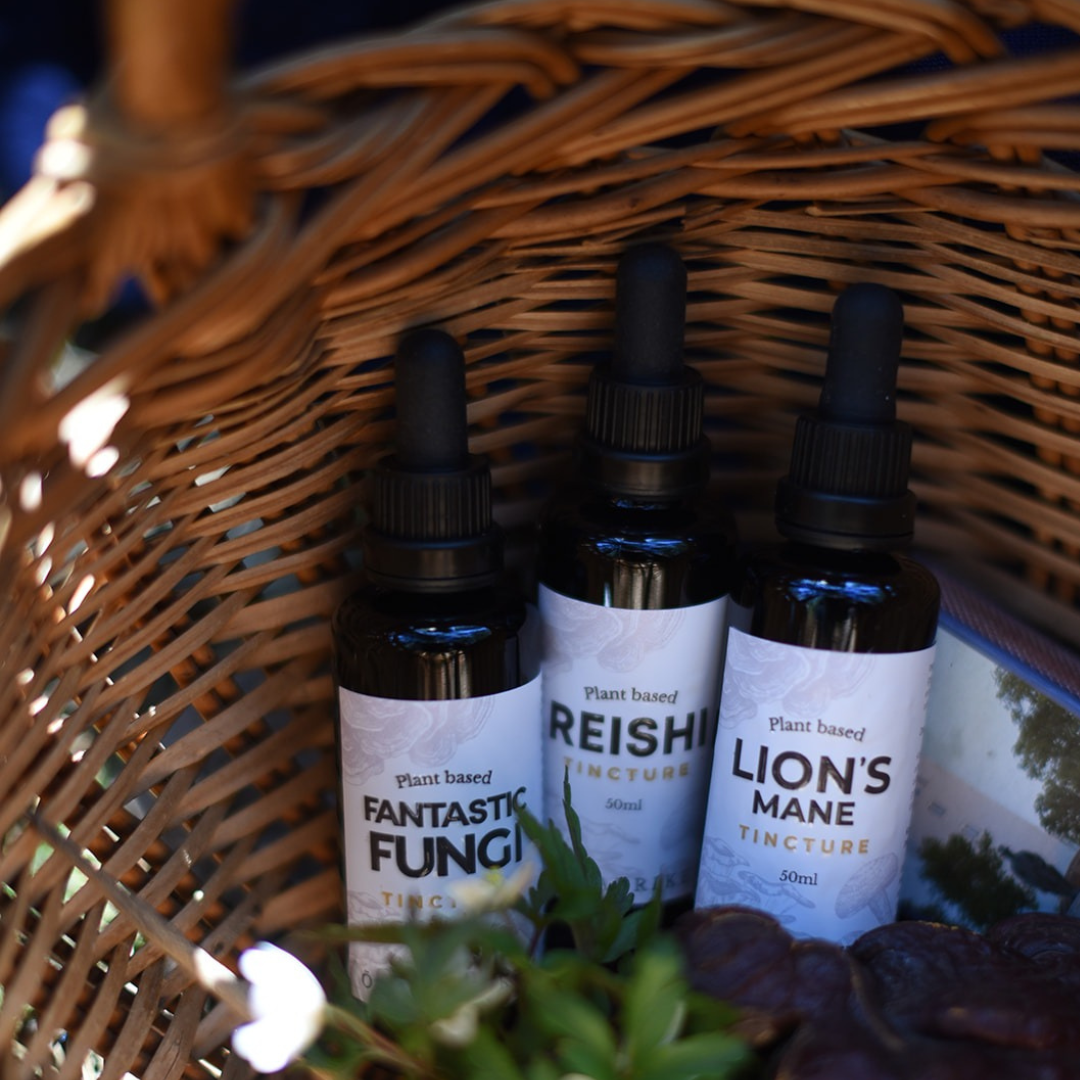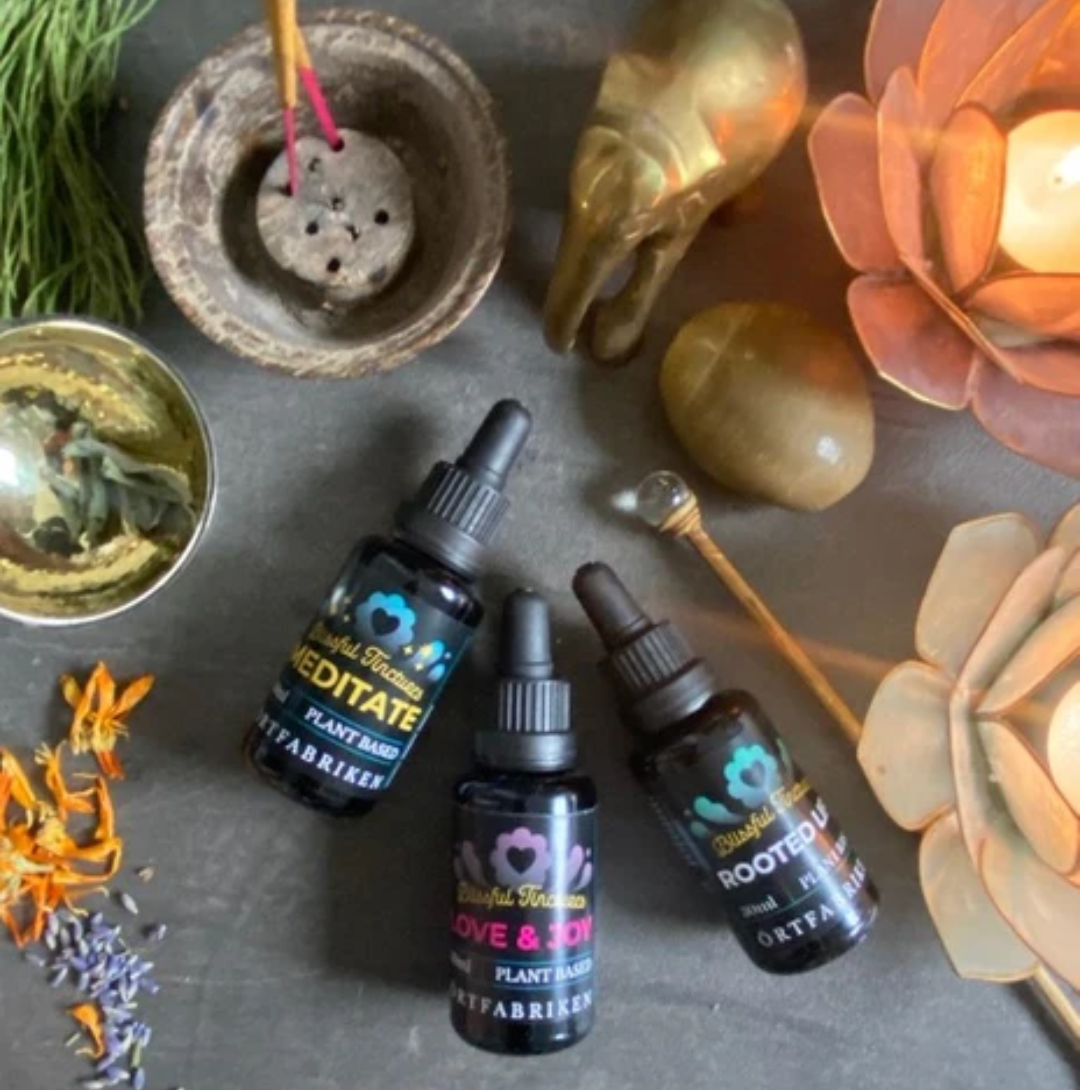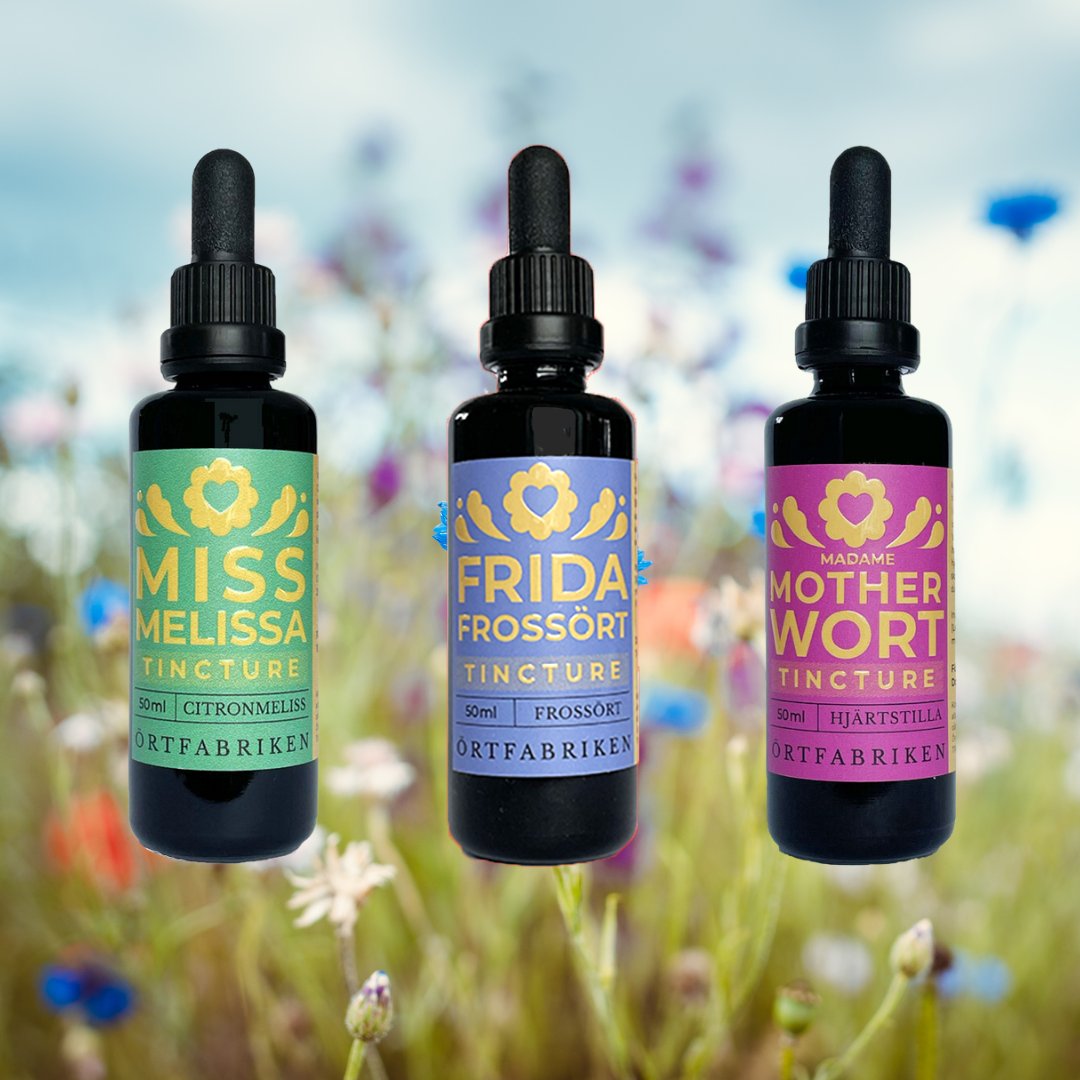Mushrooms - Fungi - Shrooms - Mushrooms - Medicinal mushrooms
Dela med en vän ♡
What should we call them?
Mushrooms offer a fascinating world to enter. We can't get enough of reading about them and testing them. Mushrooms are neither plants nor animals. Rather, something in between. They are actually more like us humans than plants are.
The most famous medicinal mushrooms are Reishi, Chaga, Lions Mane , etc. You can buy these at Örtfabriken. Other mushrooms that are worth mentioning in this context are Shiitake and Maitake, even though they are not yet as well known as functional mushrooms (more like culinary mushrooms). 
The hype surrounding these mushrooms is mainly due to two substances - beta-glucans and triterpenes. Beta-glucans are a type of soluble fiber. To ensure that there is a high content of beta-glucans in your mushroom product, you should look for how much beta-glucans is listed on the ingredients list. Anything that states 10% beta-glucans and above is positive.
Triterpenes, Flavonoids, etc. are also a reason for scientists to clap their hands. There are hundreds of terpenes in mushrooms, both diterpenes and triterpenes. Antioxidants fall into this group. Some mushrooms have a significantly higher percentage of antioxidants than plants and fruits.
It is also important to find out which part has been used to make your mushroom product. Is it the fruiting body (i.e. the mushroom itself) or is it the mycelium (the mushroom's root system)? You can find different opinions about which is preferable, but more and more people are advocating the fruiting body. That is, you want a tincture that has been made using the mushroom body and not the mycelium. The advantage is that there are more active substances in a fruiting body. The advantages of the mycelium are that it is easier to cultivate and grows faster - these are important sustainability factors.
By adding mushrooms to our daily lives (this also applies to edible mushrooms such as oyster mushrooms, chanterelles and porcini mushrooms), we could significantly increase our fiber intake. Today we eat perhaps 15 grams of fiber per day, but we would need to get significantly more. Up to 50 grams would be the ultimate. If we eat 3 small, tasty Shiitake mushrooms that you can find in the vegetable section of your grocery store, we will get 7 grams of fiber.
Triterpenes, Flavonoids, etc. are also a reason for scientists to clap their hands. There are hundreds of terpenes in mushrooms, both diterpenes and triterpenes. Antioxidants fall into this group. Some mushrooms have a significantly higher percentage of antioxidants than plants and fruits.
We need to heat the mushroom to absorb the substances. The mushroom's cell walls contain chitin (the same substance as in crab shells = very hard). If we don't heat the mushroom, we humans cannot absorb it in our intestines. Look for a product that is heated and extracted! For example, like Örtfabriken's Chaga powder . Then you can mix your powder directly into your smoothie or into a glass of water, without any other preparation. In both cold and hot liquid, in other words.
However, if you have your own harvested Chaga, you should boil your explosive in plenty of water for at least 30 minutes. The liquid should become a black-brown, earthy color. You strain this liquid and drink it. Save your Chaga piece and make new tea from it until the liquid loses its color.
At Örtfabriken you will find Chaga in powder and tincture. In tincture we also find Lion's Mane, Chaga and Reishi .
The Herbal Factory has workshops on the subject of adaptogenic herbs and mushrooms . Get in touch if you are interested!
